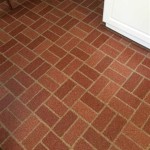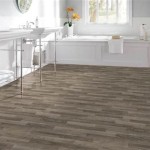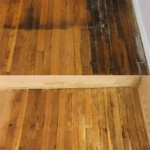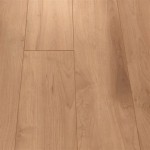Real Wood Flooring Thickness: Essential Aspects to Consider
Real wood flooring adds elegance and warmth to any home, but its thickness plays a crucial role in determining durability, stability, and suitability for different areas. Understanding the implications of varying thicknesses is essential for informed decision-making.
Standard Thicknesses
Real wood floors typically come in thicknesses ranging from 3/8 inch (9.5 mm) to 5/8 inch (15.9 mm). 3/8-inch planks are ideal for floating installations over existing subfloors or radiant heating systems. 1/2-inch (12.7 mm) planks offer good balance between durability and ease of installation. 5/8-inch planks are the thickest and most durable option, suitable for high-traffic areas and rooms with potential for moisture fluctuations.
Durability and Stability
Thicker planks resist wear and tear better than thinner ones. They are less prone to dents, scratches, and buckling. In high-traffic areas like hallways or living rooms, a thicker plank will provide greater stability and longevity.
Sound Absorption and Insulation
Thicker wood floors provide better sound absorption and insulation. They reduce noise transmission between rooms and create a quieter, more comfortable living space. Especially in apartments or multi-level homes, a thicker plank can significantly reduce the impact of footsteps and other noises.
Installation Considerations
Plank thickness impacts the installation process. Thinner planks are easier to install and require less subfloor preparation. However, thicker planks may require special tools and techniques to ensure a secure installation. Additionally, consider the height of existing moldings and baseboards to ensure a smooth transition between the flooring and walls.
Cost and Value
Thicker planks tend to be more expensive than thinner ones. However, the investment in a thicker plank often pays off in terms of increased durability, stability, and overall value of the flooring. Consider the long-term benefits and return on investment when making a decision.
Conclusion
Understanding the essential aspects of real wood flooring thickness is crucial for choosing the right product for specific needs. Consider the durability, stability, sound insulation, installation requirements, and cost implications of different thicknesses. By making an informed decision, homeowners can select the optimal flooring solution that enhances the beauty, comfort, and longevity of their homes.

Solid Wood Flooring Vs Engineered

20 6mm Thickness 190mm Wide Eu Oak Engineered Wood Flooring With Deep Embossed China Hardwood Small Taun Made In Com

Wear Layers On Engineered Flooring

3 Layer T G Engineered Flooring Thickness 15 Mm Coswick Com

Solid Wood Flooring Thickness Guide And Beyond Blog

What Is Engineered Wood Flooring Made Of And Beyond Blog

Wood Flooring Blog How Thick Should My Oak Be Peak

Thickness Of Oak Flooring Ecohardwood

How Thick Is Hardwood Flooring A Thickness Guide Reallyfloors America S Est

The Ideal Hardwood Floor Thickness For Homeowners
Related Posts








